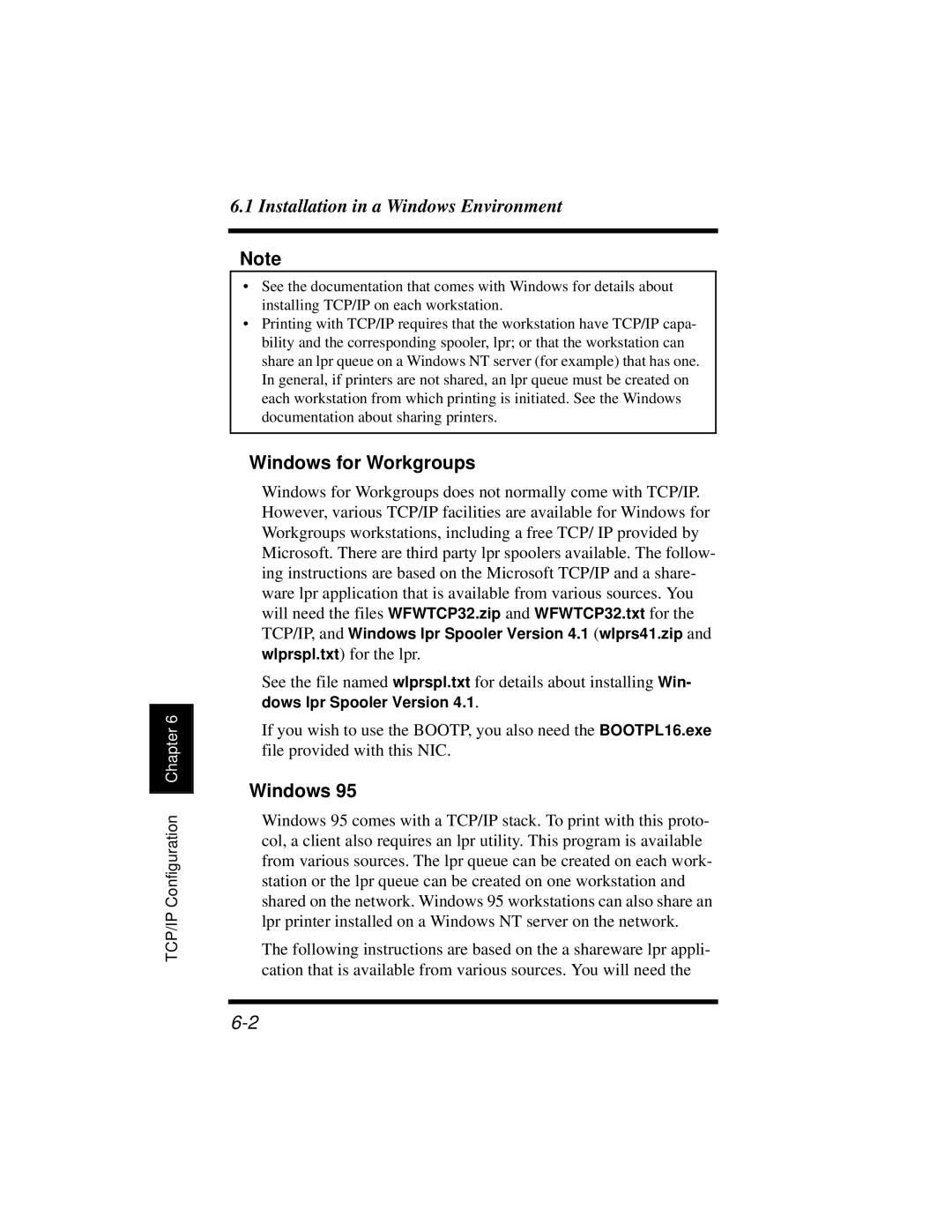
TCP/IP Configuration Chapter 6
6.1 Installation in a Windows Environment
Note
•See the documentation that comes with Windows for details about installing TCP/IP on each workstation.
•Printing with TCP/IP requires that the workstation have TCP/IP capa- bility and the corresponding spooler, lpr; or that the workstation can share an lpr queue on a Windows NT server (for example) that has one. In general, if printers are not shared, an lpr queue must be created on each workstation from which printing is initiated. See the Windows documentation about sharing printers.
Windows for Workgroups
Windows for Workgroups does not normally come with TCP/IP. However, various TCP/IP facilities are available for Windows for Workgroups workstations, including a free TCP/ IP provided by Microsoft. There are third party lpr spoolers available. The follow- ing instructions are based on the Microsoft TCP/IP and a share- ware lpr application that is available from various sources. You will need the files WFWTCP32.zip and WFWTCP32.txt for the TCP/IP, and Windows lpr Spooler Version 4.1 (wlprs41.zip and wlprspl.txt) for the lpr.
See the file named wlprspl.txt for details about installing Win- dows lpr Spooler Version 4.1.
If you wish to use the BOOTP, you also need the BOOTPL16.exe file provided with this NIC.
Windows 95
Windows 95 comes with a TCP/IP stack. To print with this proto- col, a client also requires an lpr utility. This program is available from various sources. The lpr queue can be created on each work- station or the lpr queue can be created on one workstation and shared on the network. Windows 95 workstations can also share an lpr printer installed on a Windows NT server on the network.
The following instructions are based on the a shareware lpr appli- cation that is available from various sources. You will need the
